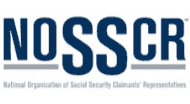33 N. Dearborn Street, Suite 1130, Chicago, IL 60602
5 Convenient Locations
Bipolar Disorder and Social Security Disability
Bipolar disorder, also known as manic-depressive illness, refers to a specific category of mood disorders where there may have been either a single episode of mania or a long standing history of both manic and depressive episodes. According to the National Institute of Mental Health (NIMH), it is estimated that bipolar disorder affects approximately one in forty-five adults and over five million Americans. Bipolar disorder is a rapidly growing condition and is marked by abnormally elevated and depressed states that often interferes with the person's everyday functioning and must be treated by mood stabilizing medications. The most popular long-term treatment for bipolar disorder is lithium carbonate. Despite numerous mood stabilizing medications, if you have bipolar disorder and it prevents you from working at a regular job, you may be entitled to Social Security disability benefits.
The Social Security Administration (SSA) has a Listing of Impairments that must be met for someone to be considered disabled. Although meeting a listing can improve your disability claim, its worth noting that failing to meet the criteria under the listing does not necessarily result in the denial of your bipolar disorder disability claim. The Listing of Impairments contains different criteria for various diseases and disorders and can be very different depending on whether you are a child or adult.
Under SSA's Listing of Impairments, bipolar disorder falls within Affective Disorders, section 12.04. In order to be disabled under section 12.04, part (a) and (b) must be met or the requirements under part (c).
Part (a) requires medically documented persistence of 1, 2, or 3:
1. Depressive syndrome characterized by at least four of the following:
a. Anhedonia or pervasive loss of interest in almost all activities.
b. Appetite disturbance with change in weight.
c. Sleep disturbance.
d. Psychomotor agitation or retardation.
e. Decreased energy.
f. Feelings of guilt or worthlessness.
g. Difficulty concentrating or thinking.
h. Thoughts of suicide.
i. Hallucinations, delusions, or paranoid thinking.
2. Manic syndrome characterized by at least three of the following:
a. Hyperactivity.
b. Pressure of speech.
c. Flight of ideas.
d. Inflated self-esteem.
e. Decreased need for sleep.
f. Easy distractibility.
g. Involvement in activities that have a high probability of painful consequences that are not recognized.
h. Hallucinations, delusions, or paranoid thinking.
3. Bipolar syndrome with a history of episodic periods manifested by the full symptomatic picture of both manic and depressive syndromes.
Part (b) requires medically documented persistence, either continuous or intermittent, of the abnormalities described in part A, resulting in at least two of the following:
1. Marked restriction of activities of daily living.
2. Marked difficulties in maintaining social functioning.
3. Marked difficulties in maintaining concentration, persistence, or pace.
4. Repeated episodes of decompensation, each of extended duration.
Part (c) requires a medically documented history of a chronic affective mental disorder lasting at least two years that has caused more than a minimal limitation
of your ability to do basic work activities, with symptoms or signs currently decreased by medication or psychosocial support and one of the following:
1. Repeated episodes of decompensation, each of extended duration;
2. A residual disease process that has resulted in such marginal adjustment that even a minimal increase in mental demands or change in the environment would be predicted to cause you to decompensate; or
3. A current history of one year or more of your inability to function outside a highly supportive living arrangement, with signs that you’ll continue to need such an arrangement.






 312-999-0999
312-999-0999 312-999-8999
312-999-8999




